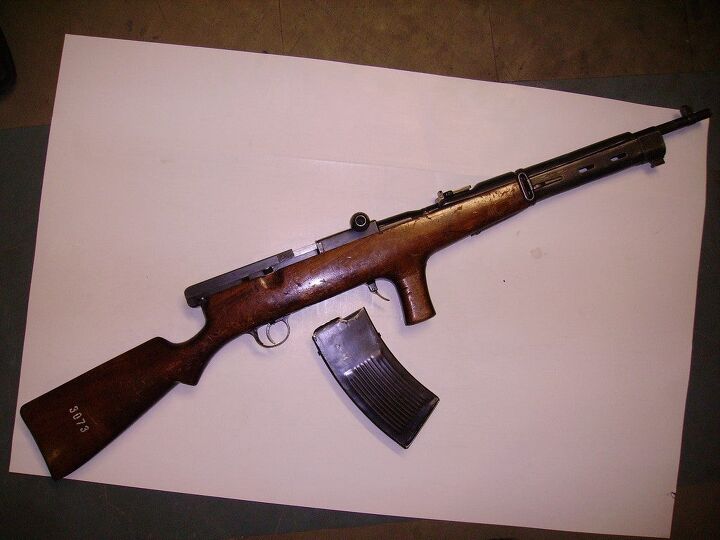Captain Fedorov, a member of the Artillery committee of Imperial Russian Army General Artillery Department (GAU), began his work on self-loading military rifles around 1905. By 1911, he perfected a self-loading rifle of his own design that fired standard issue “three line” (7.62x54R) ammunition and used short-recoil operation. By 1911 and after much experimentation Fedorov concluded that existing service ammunition is badly suited for semi-automatic rifles due to rimmed case and excessive recoil; as a result, he devised a reduced caliber, improved ballistics ammunition that fired 6.5mm pointed bullets. By 1913, he submitted his first 6.5mm self-loading rifles for trials; these rifles fired new, rimless 6.5mm ammunition with case about 57mm (2”) long; pointed jacketed bullet weighed 8.5 gram (131 grain) and had a muzzle velocity of about 850 m/s (2790 fps). Rifle was fed from internal, fixed magazine loaded with stripper clips. This new rifle passed formal trials and was deemed “promising”, but start of the Great War precluded any chances of adoption of new ammunition.
In 1915 Fedorov was sent by the GAU to the front to provide first-hand observation and analysis of employment of small arms during actual combat. According to his own reports, Fedorov was especially impressed by French newest CSRG M1915 machine rifle – a relatively lightweight and maneuverable automatic weapon which could be used to provide instant covering or suppressive fire during infantry attacks and other combat maneuvers. As a result, he decided to convert his 6.5mm semi-automatic rifle to a “machine rifle”, with select-fire capability and larger, detachable magazine.
Lack of appropriate ammunition forced Fedorov to adopt an existing cartridge of same caliber but lower power – the Japanese Arisaka 6.5x50SR. This ammunition was in use thanks to purchase of significant amount of Japanese rifles by Russian government, seeking to alleviate war-induced shortage of standard issue rifles. Due to smaller case and decreased power of the 6.5mm Arisaka ammunition (compared to original Fedorov cartridge), he cut down original barrels by about 190mm and designed special chamber inserts. New weapon was initially called “ружье-пулемет” (rifle – machine gun, or “machine rifle”). It had noticeably weaker ballistics than originally intended, producing only about 660 m/s (2160 fps) of muzzle velocity with 9 gram (139 grain) pointed Type 38 bullet.
It must be noted that new “machine rifle” was not a substitute for a true light machine gun, because its barrel was too light and overheated rapidly. The primary mode of fire for this weapon was semi-automatic; full automatic fire was to be used only in emergency situations. Also, it was originally issued as a crew-served weapon, operated by two men – the shooter and the ammo bearer (latter being armed with bolt action rifle or a semi-automatic pistol). At this moment the Fedorov machine rifle was considered to be a weapon suitable only for specialized or support use. Late in 1916 a company of the Ismail regiment was sent to the front armed with Fedorov machine rifles and Mauser C96 pistols (for 2nd numbers). Following initial success of this unit, Artillery committee issued requirements for 25,000 of Fedorov machine rifles, which were later cut down to 5,000 due to lack of industrial capabilities.
Events of the 1917 put a temporary stop to evolution of the Fedorov rifle. In the post-revolution turmoil captain Fedorov sided with new Bolshevik government and continued his work at the new machine gun plant in the city of Kovrov, initially built to produce Madsen light machine guns under Danish license and supervision. By 1921 Kovrov plant produced 6.5x50SR Fedorov rifles in small batches of about 150 per month; these rifles were issued to Red Army troops fighting various anti-revolution factions.
In 1922 a first official report was compiled about the use of Fedorov machine rifles; it appears that this report, signed by chief of 1st Red Army officers school N.Filatov coined the term “avtomat” (automatic) to the Fedorov machine rifle for the first time. This report considered the “AF” as a useful addition to the available spectrum of existing infantry armament; however, it also pointed out numerous reliability issues, caused by design flaws and certain quality control problems.
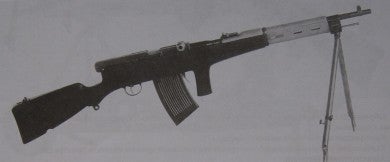
The Fedorov avtomat as modified in 1922. It was a parent to a whole family of experimental small arms – a concept that was decades ahead of its time
Fedorov continued to refine his rifle, but in 1924 Red Army command decided to stick to the 7.62x54R ammunition as the only standard issue cartridge for rifles and machine guns; All designers were ordered to re-design their weapons to this “three line” ammunition and to design new weapons only in 7.62mm. Production of the AF ceased in October 1925, with overall production totaling at about 3200 guns. In 1928, most surviving AF guns were withdrawn from service and put into storage, to be temporarily recalled for service during Winter War of 1940. This was done to arm special mobile ski units that hunted Finnish troops same way as Finnish units armed with Suomi submachine guns hunted for Red Army troops. At the time Red Army had almost no submachine guns in service, so AF was more or less a match for the Suomi in this fierce close combat, offering less ammunition capacity but noticeably better penetration of cover.
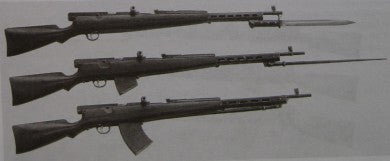
Experimental 7,62x54R Fedorov self-loading and automatic rifles, produced for Red Army trials in 1926. Their design was based on the 6.5mm avtomat. These rifles proved to be unsatisfactory and soon were abandoned.

Test-firing 7.62mm Fedorov automatic (machine) rifle, 1926
As you can see, during its service time AF was not considered to be a “standard issue” firearm; it was built to the same concept of the supporting “walking assault fire” that spawned French Chauchat CSRG M1915 and American Browning BAR M1918 machine rifles. Key advantage of the AF over those two rivals was noticeably lighter weight, thanks to smaller and lighter round, but the basic concept was exactly the same. Of cause, because of the very same relatively “soft powered” round AF became very close to a modern concept of the individual automatic rifle, and in fact can be easily compared to modern rifles firing cartridges such as 6.5mm Grendel. It also must be noted that General Fedorov was an enthusiastic supporter of the 6.5mm caliber as an “ideal compromise” for the general issue infantry rifle throughout his long and distinguished career in Red Army armaments and ordnance circles.
What is often overlooked in discussing the Fedorov Avtomat is that its role or, rather, role of the Captain (later General) Fedorov was much broader than the development of yet another machine rifle. During 1920-1925 Fedorov, working closely with his apprentice Degtyarov, produced a whole family of infantry small arms, based on the same basic action and receiver design; this family included semi-automatic rifles, select-fire rifles, as well as light and universal machine guns with various barrel cooling systems: quick detachable air-cooled barrels, forced air cooled barrels (Lewis type), and water cooled barrels. Those machine guns were designed either with bottom feed (using box magazines) or with top feed (using box or pan magazines). Besides the infantry machine guns, fitted with tripods, Fedorov and Tokarev also produced tank and aircraft installations with twin and even triple guns in single mounts. This systematic development pre-dated actual adoption of similar systems by more than 25 years
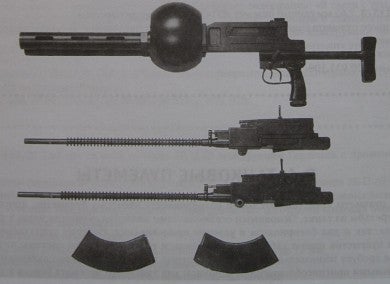
6.5mm experimental twin tank machine gun based on Fedorov avtomat and produced in 1922
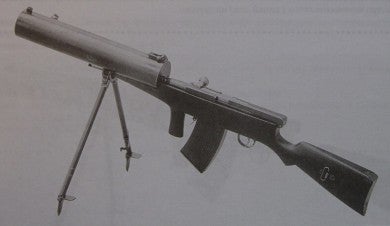
6.5mm Fedorov-Degtyarov light machine gun with water-cooled barrel, produced in 1922

6.5mm experimental Fedorov-Degtyarov light machine gun with air-cooled quick change barrel and a 50-round pan magazine, produced in 1923
PS: technical description and basic specs of the Fedorov avtomat can be found at this link:
PPS: a special note about the term AVTOMAT (АВТОМАТ). In Russian terminology, this term refers to an automatic weapon in general. In small arms “avtomat” is officially defined as the “automatic carbine”. To put this term in perspective, the “submachine gun” (пистолет-пулемет) is officially defined as the “avtomat firing pistol ammunition”.
Therefore, the term “Avtomat” should not be considered as a synonym for “assault rifle”. In fact, the latter term should be dropped from scientific consideration (apart from its historical context in conjunction with few automatic rifles or carbines actually called “Sturmgewehr”), but this is a topic for a separate article.
 Your Privacy Choices
Your Privacy Choices
